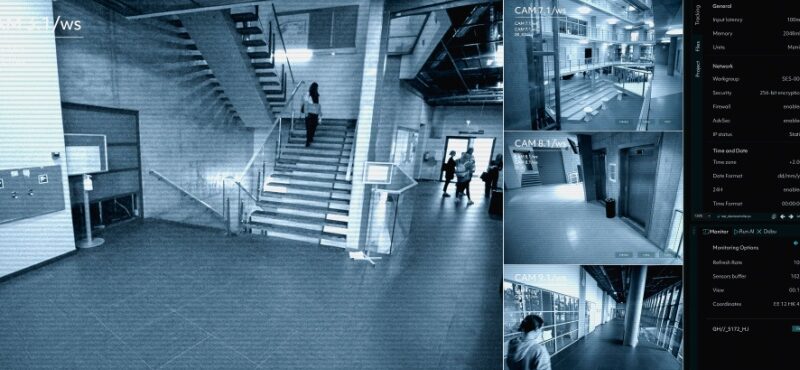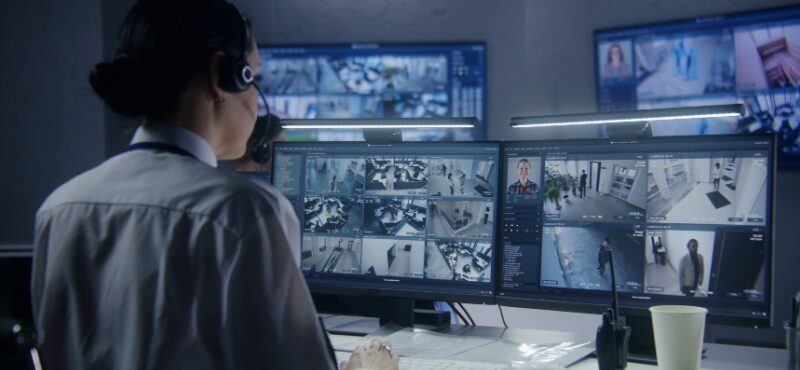Workplace security is a priority for businesses of all sizes, as theft and inefficiencies can significantly impact operations and profitability. Modern video surveillance systems play a crucial role in addressing these challenges by deterring theft, monitoring workplace activities, and improving overall productivity. With advancements in technology, surveillance systems have become more intelligent, capable of providing real-time insights and actionable data. Beyond just preventing losses, these systems foster accountability and contribute to creating a safer and more efficient work environment. As businesses face increasing challenges in security and productivity, video surveillance offers a comprehensive solution to address both effectively.
Deter Theft and Unauthorized Access
One of the most immediate benefits of video surveillance is its ability to deter theft and prevent unauthorized access. Visible cameras act as a psychological deterrent, discouraging both employees and external parties from engaging in theft or other illegal activities.
In retail settings, surveillance systems help reduce shoplifting by monitoring high-risk areas, such as entrances, exits, and product aisles. For warehouses and offices, video cameras ensure that sensitive areas, including inventory rooms and data centers, are secure. Businesses that implement surveillance systems often report significant reductions in losses due to theft, as the presence of cameras creates a perception of constant oversight.
Monitor Workplace Activities
Video surveillance provides businesses with a comprehensive view of workplace activities, enabling managers to identify inefficiencies, enforce compliance, and address safety concerns. By observing daily operations, management can ensure that employees adhere to established protocols and perform tasks efficiently.
For example, in manufacturing facilities, cameras can monitor production lines to detect bottlenecks or areas where processes can be streamlined. In offices, surveillance systems can help identify patterns of unproductivity, such as excessive time spent in break areas or distractions that affect workflow. By addressing these inefficiencies, businesses can optimize operations and improve overall performance.
Enhance Employee Accountability
The presence of video surveillance fosters a sense of accountability among employees, as they are aware that their actions are being monitored. This can lead to improved adherence to company policies, reduced instances of misconduct, and a more disciplined work environment.
Accountability is particularly important in customer-facing roles, such as retail or hospitality, where employee behavior directly impacts customer experiences. Surveillance footage can be used to review interactions, identify training needs, and recognize exemplary performance. This not only ensures that employees maintain high standards but also provides valuable opportunities for professional development.
Improve Workplace Safety
Video surveillance contributes to a safer work environment by monitoring potential hazards and ensuring compliance with safety regulations. Cameras can be strategically placed to oversee high-risk areas, such as loading docks, manufacturing equipment, or construction sites.
In the event of an accident, recorded footage provides a clear account of what occurred, helping businesses address safety concerns and prevent future incidents. Additionally, surveillance systems can alert management to unsafe practices or conditions in real time, allowing for immediate corrective action.
Combat Internal Fraud and Misconduct
Internal fraud, such as embezzlement, data theft, or misuse of company resources, can be a significant threat to businesses. Video surveillance serves as a deterrent and a tool for identifying and addressing fraudulent activities.
By integrating surveillance with access control systems, businesses can track who enters sensitive areas and when. This level of oversight ensures that only authorized personnel have access to valuable assets or confidential information. In cases of suspected misconduct, surveillance footage can provide the evidence needed to investigate and resolve issues fairly and effectively.
Boost Productivity with Advanced Surveillance Technology
Modern surveillance systems are equipped with features that go beyond security. AI-powered cameras can analyze patterns, detect anomalies, and generate reports that help businesses make informed decisions. For instance, heat mapping technology can identify areas of high activity in retail stores, enabling managers to optimize store layouts or staffing levels.
Remote access to surveillance footage allows management to monitor operations from anywhere, ensuring continuous oversight even when offsite. This flexibility enables businesses to maintain productivity and security without being physically present.
Cost-Effectiveness of Video Surveillance
While the initial investment in video surveillance systems may seem significant, the long-term benefits often outweigh the costs. By preventing theft, reducing inefficiencies, and minimizing workplace incidents, surveillance systems contribute to a healthier bottom line. Furthermore, many modern systems are scalable and customizable, allowing businesses to implement solutions that fit their specific needs and budgets.
A Smarter, Safer Workplace
Video surveillance is an essential tool for businesses looking to reduce theft, enhance accountability, and improve productivity. By providing real-time insights and fostering a culture of transparency, surveillance systems empower businesses to operate more securely and efficiently. Whether deterring theft, monitoring daily operations, or ensuring workplace safety, video surveillance delivers tangible benefits that positively impact the workplace environment.
For businesses seeking advanced video surveillance solutions, Highland Wireless offers systems designed to meet your unique needs. Contact Highland Wireless now to learn how we can help you protect your assets, enhance productivity, and create a smarter, safer workplace.





